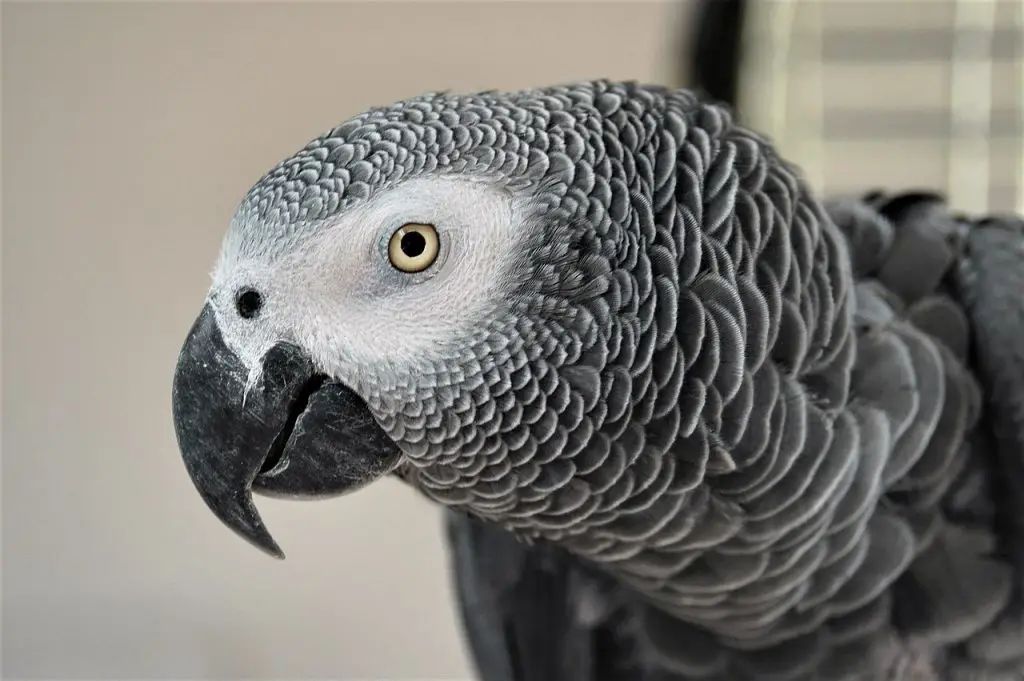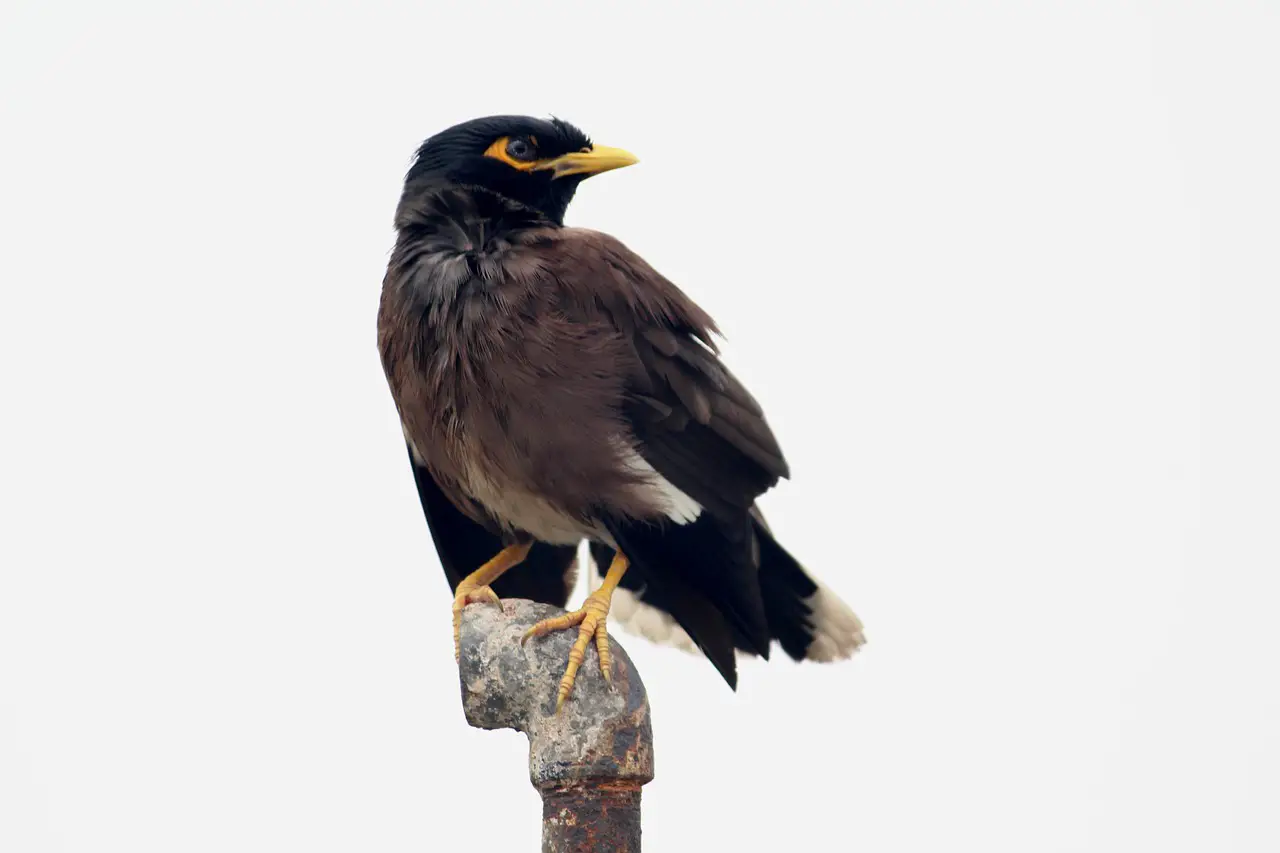While writing an article on how birds use camouflage recently, I came across some information on bird mimicry. Throughout nature, many animals use mimicry as a form of protection, and birds are no exception. I found this interesting, so I decided to write this article explaining what it is and how birds use it to their advantage.
Although rarer in birds than some animals, some species can mimic other species’ sound, colour, or form. Mimicry can be used to protect them from predators or enhance their chance of finding a mate in the case of some species.
If you want to know more about birds that imitate other species and why they do this, please read on.
Do you know how birds protect themselves? Find out here

What is mimicry?
Mimicry occurs when an animal copies another in body form, sound, or colour. There are three types of mimicry generally associated with birds, Batesian mimicry, Müllerian mimicry and aposematic mimicry.
Mimicry is used for a variety of reasons but the main reasons are for impressing a mate, protecting their territory, and accidental learning through repetition.
Batesian mimicry
Batesian mimicry occurs in animals that are not venomous or poisonous. To protect themselves from predators, animals mimic a dangerous animal’s body shape, colours, or patterns. By mimicking a dangerous animal, there is more chance that a predator will avoid attacking them.
Batesian mimicry is rare in birds and is mainly seen in insects, reptiles, and amphibians. The only known case of a bird using Batesian mimicry is the Burrowing owl. Burrowing owls use the burrows of ground squirrels as their nests. When they sense a predator is close, the owl will return to the burrow. They will then mimic the sound of a rattlesnake making rattling and hissing sounds.
There are 6 ways that birds navigate. Find out what they are here
Müllerian mimicry
Müllerian mimicry happens when a venomous or poisonous species mimics another dangerous species. The advantage is that predators will associate it with danger easier by many species imitating one sound, form, or colour. Many insects use Müllerian mimicry, as do reptiles and amphibians. Many of these are the same colour, so predators associate the colour with an unpalatable taste.
Pitohui are known to practice Müllerian mimicry in areas where species overlap. Pitohui are one of the few toxic birds containing a neurotoxic alkaloid batrachotoxin. Where different species of Pitouhi overlap in New Guinea, their colours are remarkably similar. However, their plumage is quite different in areas where they do not interact.
Do you know what co-operative breeding is? Find out here
Aposematic mimicry
Aposematic mimicry is when a dangerous animal advertises its toxic or poisonous nature to a potential predator through the colours it displays.
Both Batesian mimicry and Müllerian mimicry are versions of aposematic mimicry as colours can be used to achieve these. Bright colours are used to demonstrate that the animal is dangerous in some way. The bright colouration of Poison dart frogs is an excellent example of an animal advertising to predators that it is not going to be pleasant to eat.
While this goes against the normal reasons for camouflage, predators will generally avoid brightly coloured animals for fear of being poisoned. Although there are very few toxic birds, the brightly coloured plumage does deter some predators, but not all. For animals to be effective against predators when brightly coloured, they also need to be toxic or venomous.
Aposematic colouration happens with contrasting colours—Black and yellow on bees, for example, or black, and red or black and orange. Male birds are often brightly coloured to attract females, but females with contrasting colours are often this way because of aposematic mimicry.
Aposematic mimicry doesn’t always have to be contrasting bright colours, as this usually occurs only in diurnal animals. Nocturnal animals generally have more muted colours because they cannot be seen at night.
If you are interested in the different mating systems of birds I have written this article
Mimicking sounds
There are many species that will mimic the sound of other animals and even objects. Mynah birds are examples that people always use, but Myna birds do not imitate other species in the wild, only in captivity.
Vocal mimicry happens when one species imitates another. Many brood parasites such as the Long-tailed widowbird and the White-winged widowbird replicate the sound of the Diderick cuckoo learning the songs to be accepted into the nest.
Mockingbirds imitate not only other birds but also amphibians and insects. Starlings are excellent at mimicking other species, as are lyrebirds and many warblers.
The sounds that birds can imitate depend on their habitat and where they live. Coastal species often imitate species found locally, while inland birds will not have these in their repertoire. Some species, such as Marsh warblers can copy over one hundred different species.
Studying the songs of many of these birds has helped identify the areas where they migrate. Because many of the species that they imitate are local to parts of Africa, researchers can pinpoint the areas that they travel. Research is ongoing to decipher the migratory patterns of many warblers from their songs alone.
It is unclear why birds mimic other birds. It could be that the increased repertoire is to impress females when wanting to mate, as the most complex songs are often enough to win over a mate.
Vocal mimicry has also been seen to help in defending territories. By imitating a species coming into their territory, many males are often put off and will move on somewhere else.
Many British birds are active in summer. Here are 10 you can spot in July.
Mechanical sounds
Many birds mimic not only other animals but also produce mechanical sounds. You may have seen the David Attenborough video on YouTube of a lyrebird imitating a chainsaw, and while I am not saying they can’t do this, a lot of this was brought to us by the magic of television.
That is not to say that birds in captivity do not imitate sounds as they do. However, no wild birds have ever been heard imitating human sounds like camera shutters or chainsaws. The bird in David Attenborough’s Life of birds programme lived in Adelaide zoo and was there when the construction of the panda enclosure was being built. While it is still impressive that the bird could imitate these sounds, it is wrong to think this is due to deforestation.
August is an excellent month for spotting British birds. Here are 10 to spot in August.
Which birds mimic others?
There are many species that imitate others. Some of these are:-
- Lyrebirds
- American crow
- Blue jay
- Stellar’s jay
- European starling
- Myna
- Marsh warbler
- Northern mockingbird
- Brown thrasher
- African gray parrot

